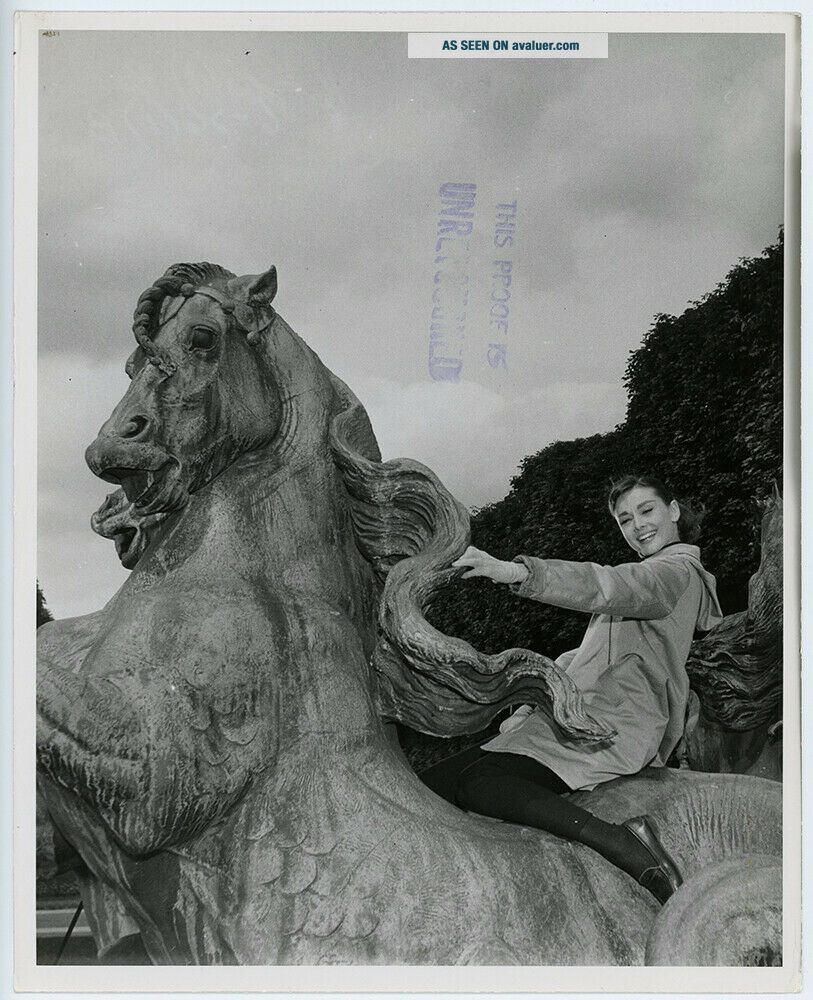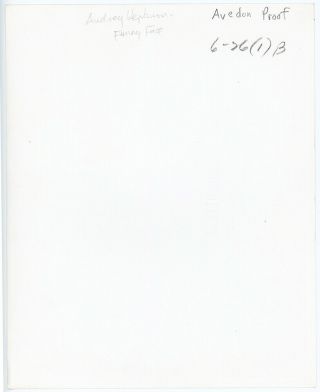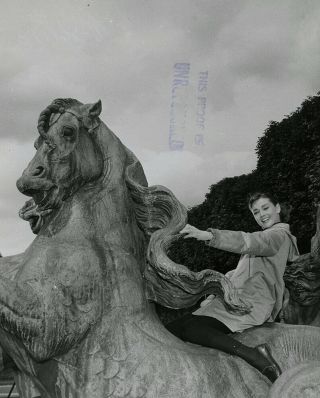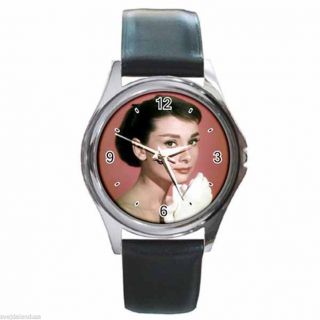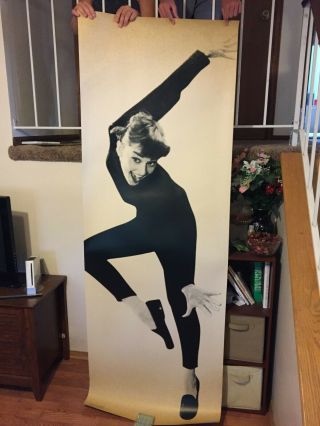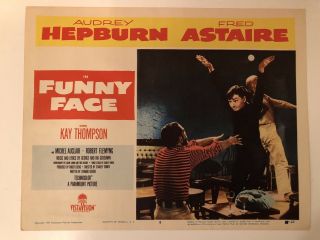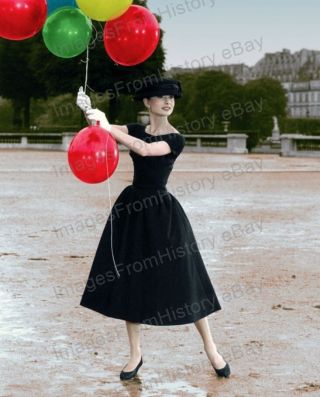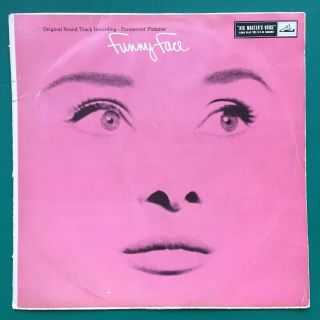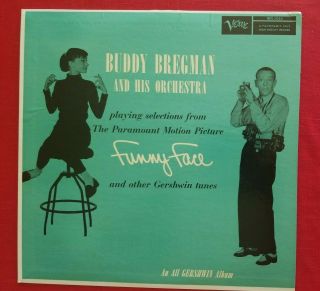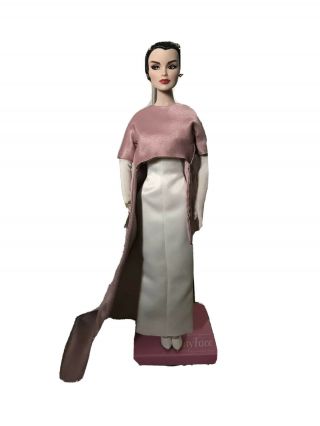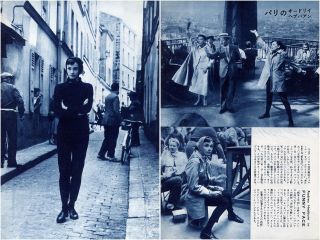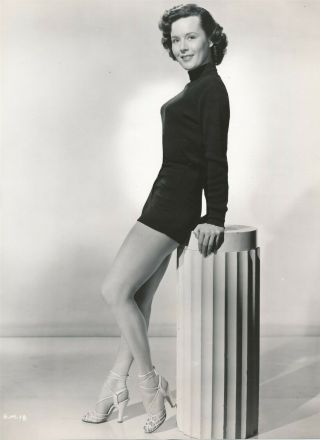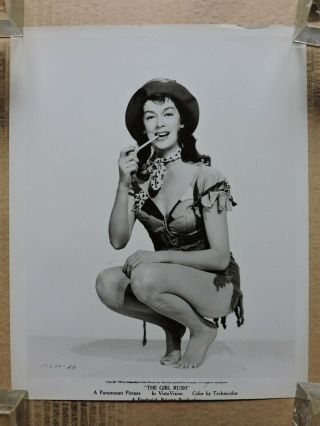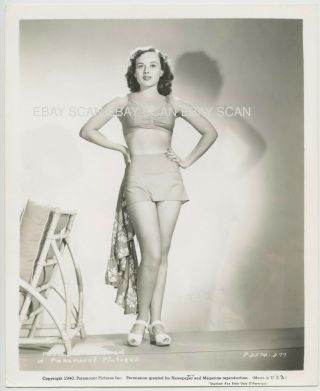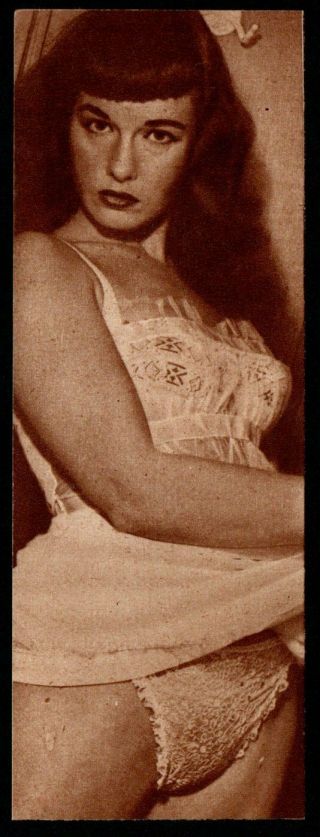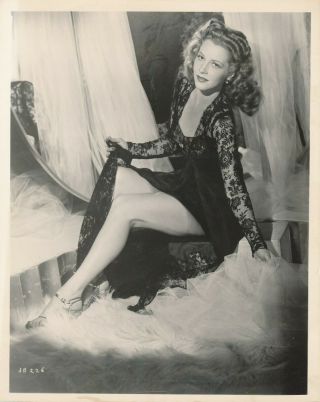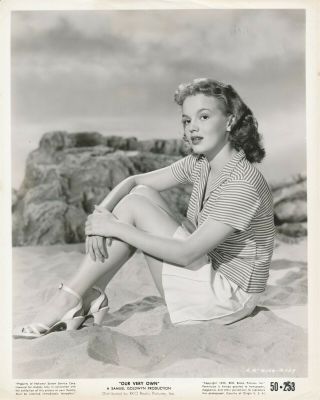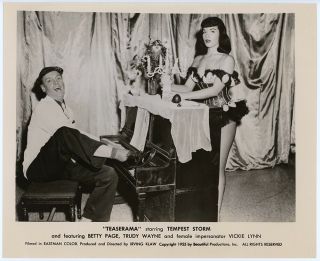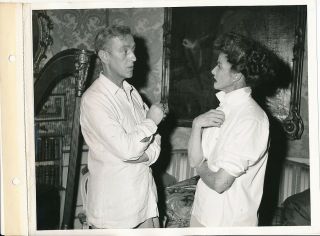Audrey Hepburn Funny Face Unretouched Richard Avedon Proof Photograph Vintage
Item History & Price
Thanks to all our eBay bidders! We are honored to be your one-stop, 5-star source for vintage pin up, pulp magazines, original illustration art, decorative collectibles and ephemera with a wide and always changing assortment of antique and vintage items from the Victorian, Art Nouveau, Art Deco, and Mid-Century Modern eras. All items are 100% guaranteed to be original, vintage, and as described. Please feel free to contact us with any and all questions about the items and our p...olicies and please take a moment to peruse our other great eBay listings. All sell no reserve!
ITEM: This is a vintage and original unretouched Richard Avedon proof photograph of actress Audrey Hepburn during the filming of the 1957 film Funny Face. The actress is joyous as she sits on the back of a horse sculpture in the Fontaine de l'Observatoire in Paris, France, where much of the movie was filmed. A wonderful piece of Golden Age of Hollywood memorabilia and a great Richard Avedon artifact.
Measures 8" x 10" on a glossy single weight paper stock.
Handwritten notations on verso.
CONDITION: Fine condition with corner wear, ink stamp in the center of the image, and general storage/handling wear. Please use the included images as a conditional guide.
Guaranteed to be 100% vintage and original from Grapefruit Moon Gallery.
••••••••••••••••••••
Audrey Hepburn was born on May 4, 1929 in Ixelles, Brussels, Belgium. She was a blue-blood and a cosmopolitan from birth. Her mother, Baroness Ella Van Heemstra, was of a Dutch descent, and her father, Joseph Victor Anthony Hepburn-Ruston, was born in Úzice, Bohemia, and of an English and Austrian ancestry.
After her parents divorced, Audrey went to London with her mother where she went to a private girls school. Later, when her mother moved back to the Netherlands, she attended private schools as well. While she vacationed with her mother in Arnhem, Netherlands, Hitler's army took over the town. It was here that she fell on hard times during the Nazi occupation. Audrey suffered from depression and malnutrition.
After the liberation, she went to a ballet school in London on a scholarship and later began a modeling career. As a model, she was graceful and, it seemed, she had found her niche in life--until the film producers came calling. In 1948, after being spotted modeling by a producer, she was signed to a bit part in the European film Dutch in Seven Lessons (1948).
Later, she had a speaking role in the 1951 film, Young Wives' Tale (1951) as Eve Lester. The part still wasn't much, so she headed to America to try her luck there. Audrey gained immediate prominence in the US with her role in Roman Holiday (1953). This film turned out to be a smashing success, and she won an Oscar as Best Actress.
On September 25, 1954, she married actor Mel Ferrer. She also starred in Sabrina (1954), for which she received another Academy Award nomination.
She starred in the films Funny Face (1957) and Love in the Afternoon (1957). She received yet another Academy Award nomination for her role in The Nun's Story (1959).
On July 17, 1960, she gave birth to her first son, Sean Hepburn Ferrer.
Audrey reached the pinnacle of her career when she played Holly Golightly in the legendary film Breakfast at Tiffany's (1961), for which she received another Oscar nomination. She scored commercial success again playing Regina Lampert in the espionage caper Charade (1963). One of Audrey's most radiant roles was in the fine production of My Fair Lady (1964). After a couple of other movies, most notably Two for the Road (1967), she hit pay dirt and another nomination in Wait Until Dark (1967).
In 1967, Audrey decided to retire from acting while she was on top. She divorced from Mel Ferrer in 1968.
On January 19, 1969, she married Dr. Andrea Dotti. On February 8, 1970, she gave birth to her second son, Luca Dotti in Lausanne, Vaud, Switzerland.
From time to time, she would appear on the silver screen.
In 1988, Audrey became a special ambassador to the United Nations UNICEF fund helping children in Latin America and Africa, a position she retained until 1993. She was named to People's magazine as one of the 50 most beautiful people in the world. Her last film was Always (1989) in 1989.
Audrey Hepburn died on January 20, 1993 in Tolochnaz, Vaud, Switzerland, from appendicular cancer. She had made a total of 31 high quality movies. Her elegance and style will always be remembered in film history as evidenced by her being named in Empire magazine's "The Top 100 Movie Stars of All Time."
- IMDb Mini Biography By: Denny Jackson and Volker Boehm
••••••••••••••••••••
Richard Avedon (May 15, 1923 – October 1, 2004) was an American fashion and portrait photographer. An obituary published in The New York Times said that "his fashion and portrait photographs helped define America's image of style, beauty and culture for the last half-century".
Avedon was born in New York City to a Jewish family. His father, Jacob Israel Avedon, was a Russian-born immigrant who advanced from menial work to starting his own successful retail dress business on Fifth Avenue called Avedon's Fifth Avenue. His mother, Anna, from a family that owned a dress-manufacturing business, encouraged Richard's love of fashion and art. Avedon's interest in photography emerged when, at age 12, he joined a Young Men's Hebrew Association (YMHA) Camera Club. He would use his family's Kodak Box Brownie not only to feed his curiosity about the world but also to retreat from his personal life. His father was a critical and remote disciplinarian, who insisted that physical strength, education and money prepared one for life. The photographer's first muse was his younger sister, Louise. During her teen years, she struggled through psychiatric treatment, eventually becoming increasingly withdrawn from reality and diagnosed with schizophrenia. These early influences of fashion and family would shape Avedon's life and career, often expressed in his desire to capture tragic beauty in photos.
Avedon attended DeWitt Clinton High School in Bedford Park, Bronx, where from 1937 until 1940 he worked on the school paper, The Magpie, with James Baldwin. As a teen, he also won a Scholastic Art and Writing Award. After graduating from DeWitt Clinton that year, he enrolled at Columbia University to study philosophy and poetry but dropped out after one year. He then started as a photographer for the Merchant Marines, taking ID shots of the crewmen with the Rolleiflex camera his father had given him. From 1944 to 1950, Avedon studied photography with Alexey Brodovitch at his Design Laboratory at The New School for Social Research.
In 1944, Avedon began working as an advertising photographer for a department store, but was quickly endorsed by Alexey Brodovitch, who was art director for the fashion magazine Harper's Bazaar. Lillian Bassman also promoted Avedon's career at Harper's. In 1945, his photographs began appearing in Junior Bazaar and, a year later, in Harper's Bazaar.
In 1946, Avedon had set up his own studio and began providing images for magazines including Vogue and Life[vague]. He soon became the chief photographer for Harper's Bazaar. From 1950, he also contributed photographs to Life, Look and Graphis and in 1952 became Staff Editor and photographer for Theatre Arts Magazine. Avedon did not conform to the standard technique of taking studio fashion photographs, where models stood emotionless and seemingly indifferent to the camera. Instead, Avedon showed models full of emotion, smiling, laughing, and, many times, in action in outdoor settings, which was revolutionary at the time. However, towards the end of the 1950s, he became dissatisfied with daylight photography and open air locations and so turned to studio photography, using strobe lighting.
When Diana Vreeland left Harper's Bazaar for Vogue in 1962, Avedon joined her as a staff photographer. He proceeded to become the lead photographer at Vogue and photographed most of the covers from 1973 until Anna Wintour became editor in chief in late 1988. Notable among his fashion advertisement series are the recurring assignments for Gianni Versace, beginning with the spring/summer campaign 1980. He also photographed the Calvin Klein Jeans campaign featuring a fifteen-year-old Brooke Shields, as well as directing her in the accompanying television commercials. Avedon first worked with Shields in 1974 for a Colgate toothpaste ad. He shot her for Versace, 12 American Vogue covers and Revlon's Most Unforgettable Women campaign. In the February 9, 1981, issue of Newsweek, Avedon said that "Brooke is a lightning rod. She focuses the inarticulate rage people feel about the decline in contemporary morality and destruction of innocence in the world." On working with Avedon, Shields told Interview magazine in May 1992, "When Dick walks into the room, a lot of people are intimidated. But when he works, he's so acutely creative, so sensitive. And he doesn't like it if anyone else is around or speaking. There is a mutual vulnerability, and a moment of fusion when he clicks the shutter. You either get it or you don't".
In addition to his continuing fashion work, by the 1960s Avedon was making studio portraits of civil rights workers, politicians and cultural dissidents of various stripes in an America fissured by discord and violence. He branched out into photographing patients of mental hospitals, the Civil Rights Movement in 1963, protesters of the Vietnam War, and later the fall of the Berlin Wall.
A personal book called “Nothing Personal, ” with a text by his high school classmate James Baldwin, appeared in 1964.[9] During this period, Avedon also created two well known sets of portraits of The Beatles. The first, taken in mid to late 1967, became one of the first major rock poster series, [citation needed] and consisted of five psychedelic portraits of the group — four heavily solarized individual color portraits, and a black-and-white group portrait taken with a Rolleiflex camera and a normal Planar lens. The next year, he photographed the much more restrained portraits that were included with The Beatles LP in 1968. Among the many other rock bands photographed by Avedon, in 1973, he shot Electric Light Orchestra with all the members exposing their bellybuttons for recording On the Third Day.
Avedon was always interested in how portraiture captures the personality and soul of its subject. As his reputation as a photographer became widely known, he photographed many noted people in his studio with a large-format 8×10 view camera. His subjects include Buster Keaton, Marian Anderson, Marilyn Monroe, Ezra Pound, Isak Dinesen, Dwight D. Eisenhower, Andy Warhol, and the Chicago Seven. His portraits are distinguished by their minimalist style, where the person is looking squarely at the camera, posed in front of a sheer white background. By eliminating the use of soft lights and props, Avedon was able to focus on the inner worlds of his subjects evoking emotions and reactions. He would at times evoke reactions from his portrait subjects by guiding them into uncomfortable areas of discussion or asking them psychologically probing questions. Through these means he would produce images revealing aspects of his subject's character and personality that were not typically captured by others.
Avedon's mural groupings featured emblematic figures: Andy Warhol with the players and stars of The Factory; The Chicago Seven, political radicals charged with conspiracy to incite riot at the 1968 Democratic National Convention; the Beat poet Allen Ginsberg and his extended family; and the Mission Council, a group of military and government officials who governed the United States' participation in the Vietnam War.
In 1982 Avedon produced a playfully inventive series of advertisements for fashion label Christian Dior, based on the idea of film stills. Featuring director Andre Gregory, photographer Vincent Vallarino and model/actress Kelly Le Brock, the color photographs purported to show the wild antics of a fictional "Dior family" living ménage à trois while wearing elegant fashions.
Avedon became the first staff photographer for The New Yorker in 1992, where his post-apocalyptic, wild fashion fable “In Memory of the Late Mr. and Mrs. Comfort, ” featuring model Nadja Auermann and a skeleton, was published in 1995. Other pictures for the magazine, ranging from the first publication, in 1994, of previously unpublished photos of Marilyn Monroe to a resonant rendering of Christopher Reeve in his wheelchair and nude photographs of Charlize Theron in 2004, were topics of wide discussion. Some of his less controversial New Yorker portraits include those of Saul Bellow, Hillary Clinton, Toni Morrison, Derek Walcott, John Kerry, and Stephen Sondheim. In his later years, he continued to contribute to Egoïste, where his photographs appeared from 1984 through 2000. In 1999, Avedon shot the cover photos for Japanese-American singer Hikaru Utada's Addicted to You.
Photographer Annie Leibovitz names Avedon as a major influence, describing his style as ‘personal reportage’, developing close rapport with one's subjects.
One of the things Avedon is distinguished by as a photographer is his large prints, sometimes measuring over three feet in height. His large-format portrait work of drifters, miners, cowboys and others from the western United States became a best-selling book and traveling exhibit entitled In the American West, and is regarded as an important hallmark in 20th century portrait photography, and by some as Avedon's magnum opus.
Serious heart inflammations hindered Avedon's health in 1974. The troubling time inspired him to create a compelling collection from a new perspective. In 1979, he was commissioned by Mitchell A. Wilder (1913–1979), the director of the Amon Carter Museum in Fort Worth, Texas, to complete the “Western Project.” Wilder envisioned the project to portray Avedon's take on the American West. It became a turning point in Avedon's career when he focused on everyday working class subjects such as miners soiled in their work clothes, housewives, farmers and drifters on larger-than-life prints, instead of the more traditional options of focusing upon noted public figures or the openness and grandeur of the West. The project lasted five years concluding with an exhibition and a catalogue. It allowed Avedon and his crew to photograph 762 people and expose approximately 17, 000 sheets of 8×10 Kodak Tri-X Pan film. The collection identified a story within his subjects of their innermost self, a connection Avedon admits would not have happened if his new sense of mortality through severe heart conditions and aging hadn’t occurred. Avedon visited and traveled through state fair rodeos, carnivals, coal mines, oil fields, slaughter houses and prisons to find subjects. In 1994, Avedon revisited his subjects who would later speak about In the American West aftermath and its direct effects. Billy Mudd, a trucker, went long periods of time on his own away from his family. He was a depressed, disconnected and lonely man before Avedon offered him the chance to be photographed. When he saw his portrait for the first time, Mudd saw that Avedon was able to reveal something about Mudd that allowed him to recognize the need for change in his life. The portrait transformed Mudd, and led him to quit his job and return to his family.
Helen Whitney's 1996 American Masters documentary episode, Avedon: Darkness and Light, depicts an aging Avedon identifying In the American West as his best body of work. The project was embedded with Avedon's goal to discover new dimensions within himself, from a Jewish photographer from the East who celebrated the lives of noted public figures, to an aging man at one of the last chapters of his life, to discovering the inner-worlds, and untold stories of his Western rural subjects.
During the production period Avedon encountered problems with size availability for quality printing paper. While he experimented with platinum printing he eventually settled on Portriga Rapid, a double-weight, fiber-based gelatin silver paper manufactured by Agfa-Gevaert. Each print required meticulous work, with an average of thirty to forty manipulations. Two exhibition sets of In the American West were printed as artist proofs, one set to remain at the Carter after the exhibition there, and the other, property of the artist, to travel to the subsequent six venues. Overall, the printing took nine months, consuming about 68, 000 square feet (6, 300 m2) of paper.
While In the American West is one of the Avedon's most notable works, it has often been criticized for falsifying the West through voyeuristic themes and for exploiting his subjects. Critics question why a photographer from the East who traditionally focuses on models or public figures would go out West to capture the working class members who represent hardship and suffering. They argue that Avedon's intentions are to influence and evoke condescending emotions from the viewer such as pity.
Avedon had numerous museum exhibitions around the world. His first major retrospective was at the Minneapolis Institute of Arts in 1970. The Metropolitan Museum of Art, New York, presented two solo exhibitions during his lifetime, in 1978 and 2002. In 1980 another retrospective was organized by the University Art Museum in Berkeley. Major retrospectives were mounted at the Whitney Museum of American Art, New York (1994), and at the Louisiana Museum of Modern Art, Humlebaek, Denmark (2007; which traveled to Milan, Paris, Berlin, Amsterdam and San Francisco, through 2009). Showing Avedon's work from his earliest, sun-splashed pictures in 1944 to portraits in 2000 that convey his fashion fatigue, the International Center of Photography in 2009 mounted the largest survey of his fashion work. Also in 2009, the Corcoran Gallery of Art showed Richard Avedon: Portraits of Power, bringing together his political portraits for the first time.
In 1944, Avedon married 19-year-old bank teller Dorcas Marie Nowell who later became the model and actress Doe Avedon; they did not have children and divorced in 1949. The couple summered at the gay village of Cherry Grove, Fire Island, and Avedon's bisexuality has been attested to by colleagues and family. He was reportedly devastated when Nowell left him.
In 1951, he married Evelyn Franklin; she died on March 13, 2004. Their marriage produced one son, John Avedon, who has written extensively about Tibet.
In 1970, Avedon purchased a former carriage house on the Upper East Side of Manhattan that would serve as both his studio and apartment. In the late 1970s, he purchased a four-bedroom house on a 7.5-acre (3.0 ha) estate in Montauk, New York, between the Atlantic Ocean and a nature preserve; he sold it for almost $9 million in 2000.
Avedon's nephew is martial arts actor Loren Avedon.
According to Norma Stevens, Avedon's longtime studio director, Avedon confided in her about his homosexual relationships, including a decade-long affair with director Mike Nichols.
On October 1, 2004, Avedon died in a San Antonio, Texas hospital of complications from a cerebral hemorrhage. He was in San Antonio shooting an assignment for The New Yorker. At the time of his death, he was also working on a new project titled Democracy to focus on the run-up to the 2004 U.S. presidential election.
– Wikipedia
••••••••••••••••••••



